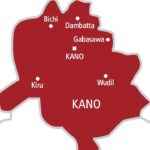Climate Finance: A necessary lubricant for Africa’s adaptation wheel
Feb. 2, 2022
The global community has called for countries to concentrate all post-pandemic recovery investments on immediate eco-friendly and sustainable channels in order to address climate change issues. It is also trying as much as possible to ramp up climate finance for mitigation and adaptation in communities that are being hit by the climate crisis.
However, a focus on climate change adaptation in Africa must be prioritized for the financing as well. To help Africa scale-up innovation and innovative practices as well as ensure a balance between mitigation and adaptation outcomes, there needs to be equity and justice in the deployment of climate finance.
There needs to be an enormous investment in major sectors like energy, agriculture, urbanization, and infrastructure development to help the continent become technologically advanced.
At COP26, we witnessed an increasing commitment by world leaders toward a net-zero economy and this has given hope to many communities on the prospects of meeting emissions targets. For a continent like Africa, however, the net-zero journey might be belated because countries are already feeling the effects of climate change.
On the one hand, human activities have already caused about 1.0°C of global warming that is above pre-industrial levels. On the other hand, there is a continued increase in greenhouse gas emissions and atmospheric concentrations.
In addition, the continent is expected to pursue mitigation actions that are somewhat highly ambitious in order to keep warming below 2°C above pre-industrial levels.
Judging from the above factors, it appears that Africa will inevitably struggle with the effects of climate change in the long run. It is for this reason that there must be an urgency attached to ramping up climate finance for the sole purpose of investing in urgent adaptation actions in the continent.
Africa is very much vulnerable to climate change and this is already causing social, environmental, and economic problems. Temperature increases, sea-level rise, as well as changing rainfall and weather patterns, are affecting yields of major staple crops.
Examples of the devastating effects of climate change in the continent are the invasion of desert locusts in the horn of Africa and the floods in some parts of the Southern Africa region. These effects have dire consequences on human life, livelihood, and the environment – health and disaster risks, food insecurity, water scarcity, etc. – further plunging the continent into poverty.
According to IPCC projections, climate change impacts on agriculture and food prices could force over 3 – 16 million people (mostly in Sub-Saharan Africa and Asia) into extreme poverty. Because these regions are poor, they either often lack the capacity to cope with climate change effects or are unable to access or implement innovative technologies for adaptation or both. To survive, many of them are forced to migrate to other countries.
It is for this reason that adaptation must be a major priority for climate financing in Africa to help countries in the continent to be less vulnerable to climate change impacts, strengthen their resilience, and support efforts to improve their adaptive capacity.
For Africa to achieve this, priority should be given to areas such as agriculture, health, energy, water resources management, disaster risk management, climate information services, coastal zone management, sustainable land and forest management, and urban development and infrastructure.
To enhance adaptation and resilience, specific actions must be taken and this must include protecting livelihoods, enhancing adaptive capacity, attaining and protecting food and water security, improving ecosystem structures and functions, assisting and improving human health and safety, and ensuring that major components of economies in the different countries in the continent as well as sustainable development, are climate-proof.
The way the current global infrastructure for climate finance is designed coupled with the growing commitment to adaptation by the International Financing Institutions can play a crucial role in mobilizing the financing to meet the resources needed for adaptation and helping developing countries attract private capital.
An example is the Africa Adaptation Acceleration Program (AAAP) by the African Development Bank aimed at mobilizing US$25 billion to accelerate climate change adaptation actions across Africa. These funds can be used to help governments address institutional, policy, and investment hindrances via private capital access.
Bottom line
Africa is in a greater position to implement adaptation actions that can also present mitigation benefits. For instance, natural climate solutions like reforestation and improved land management actions which help in increasing carbon storage and mitigating greenhouse gas emissions, are also important for attaining community adaptation and resilience to climate change.
The continent needs to ensure that climate financing for innovations aimed at adaptation and mitigation are directly beneficial to the most affected and vulnerable communities as it will enable opportunities for entrepreneurship and job creation, and support their overall economic and social well-being.
No doubt, climate finance for adaptation has the potential to play a crucial role in supporting the implementation of the Sustainable Development Goals (SDGs) across Africa and beyond.
Courtesy: Climateaction.africa








